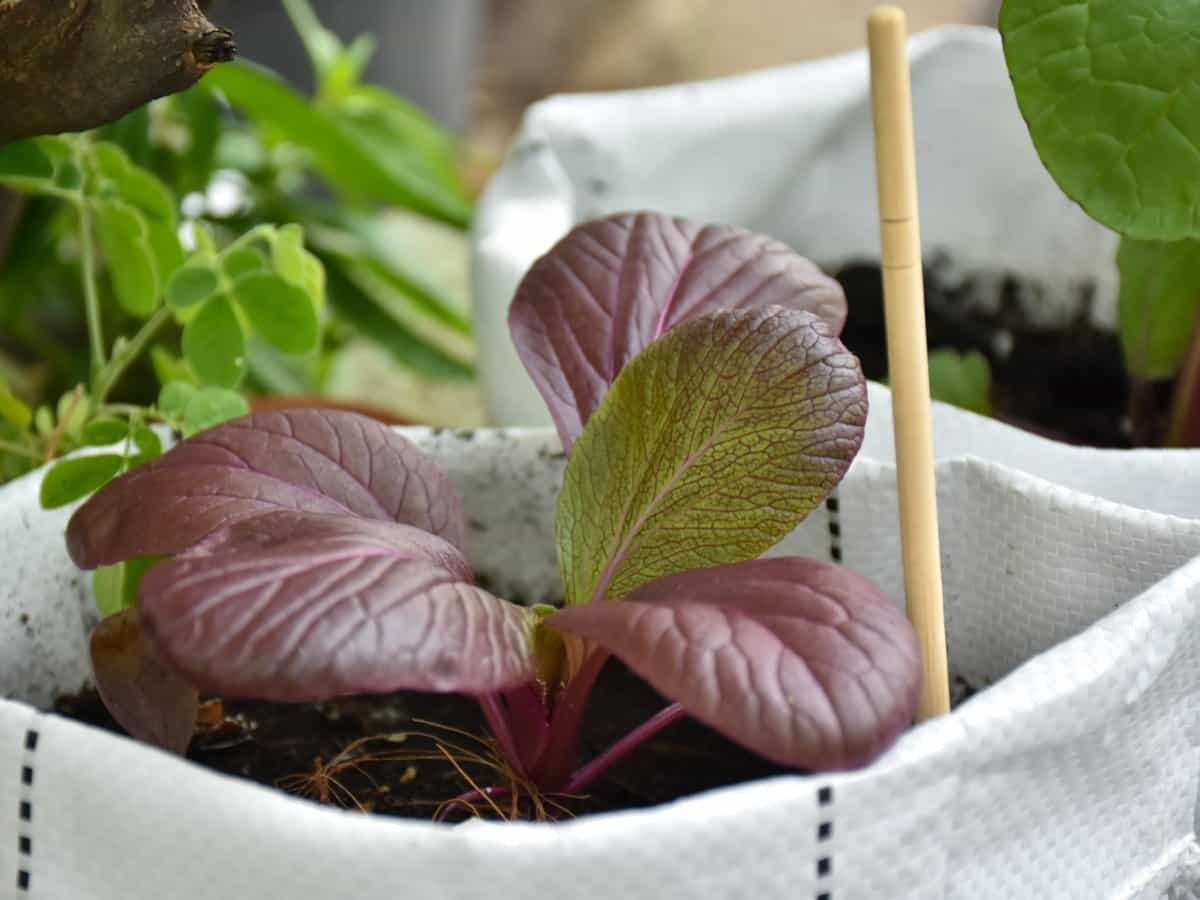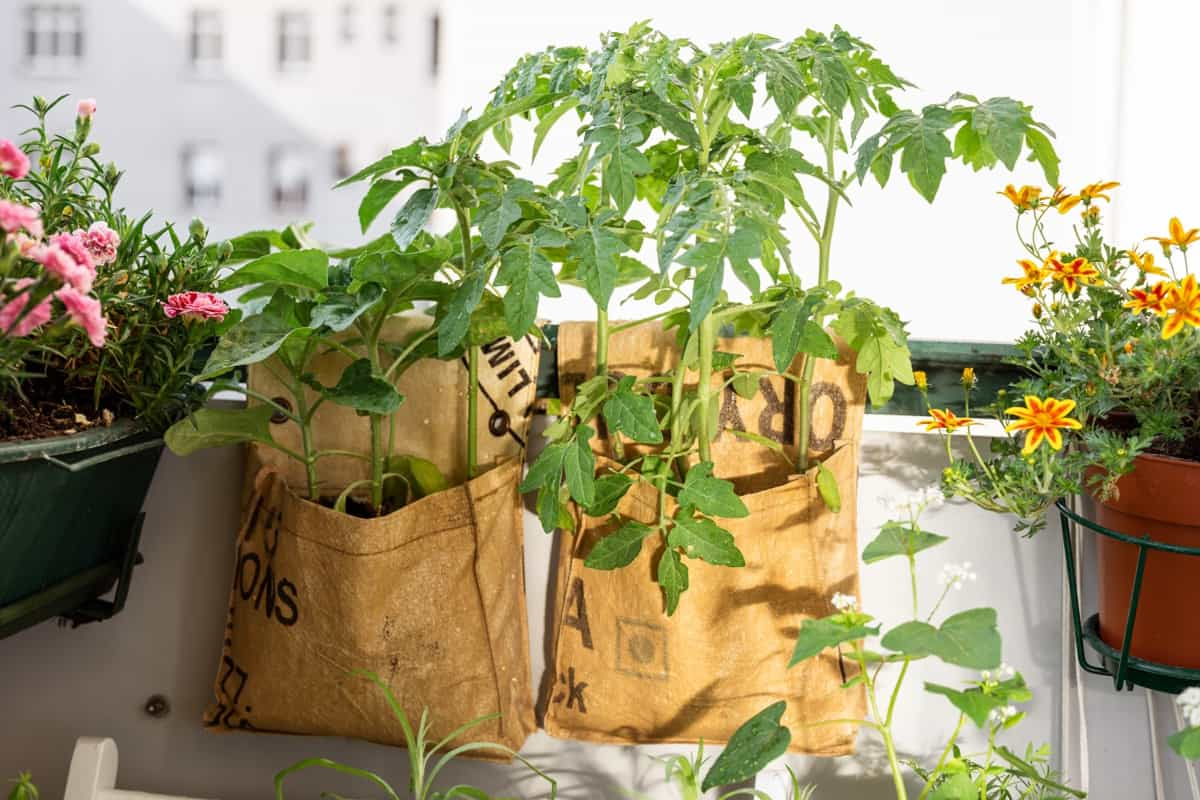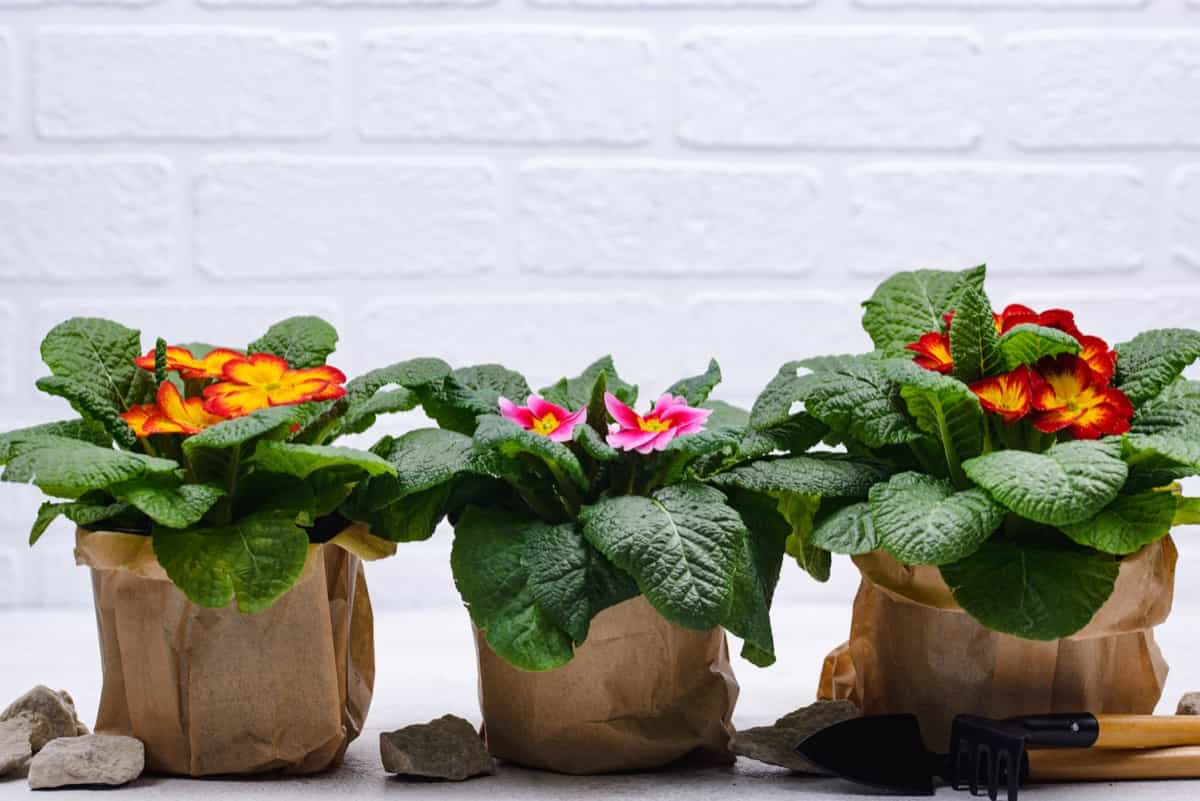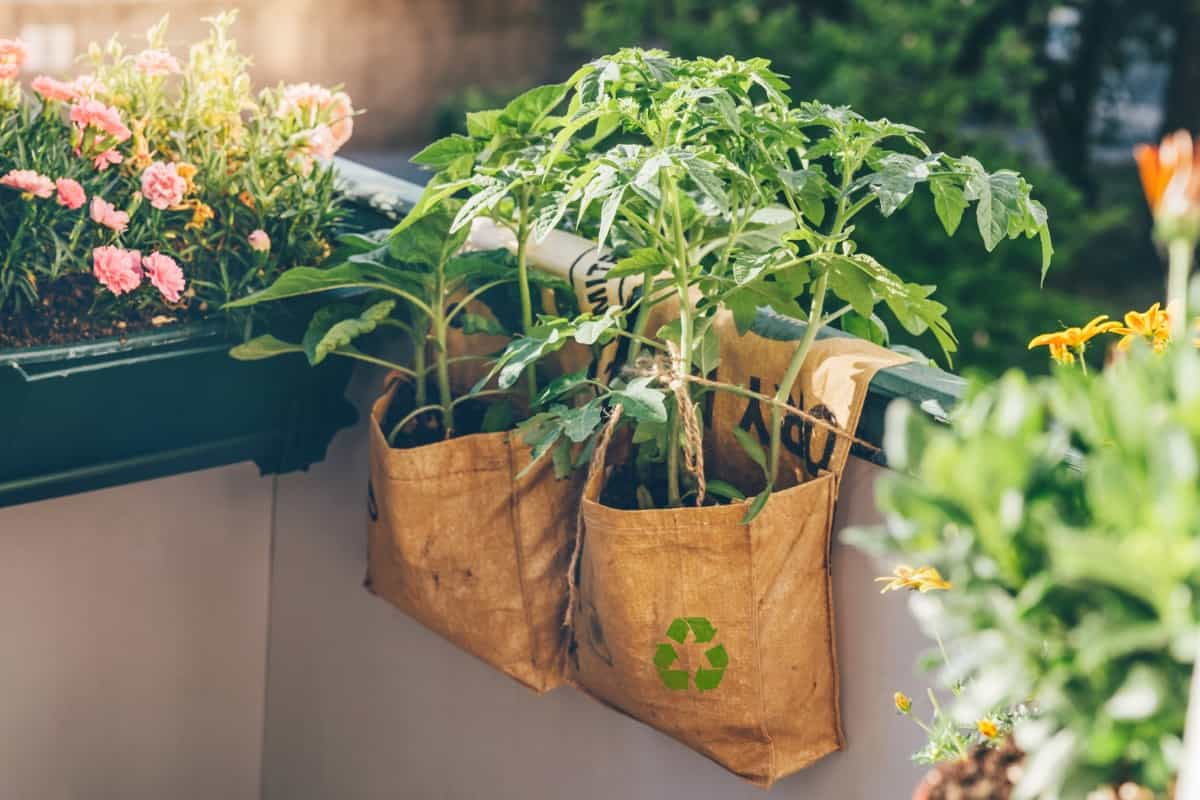Balcony gardening with grow bags is a fantastic way to maximize your space and bring nature into your home. With the right setup and care, you can create a beautiful oasis right outside your door. Whether you’re growing herbs, flowers, or vegetables, grow bags offer a flexible and convenient solution for urban gardeners.

Introduction to Balcony Gardening with Grow Bags
Benefits of Using Grow Bags
When it comes to grow bag gardening benefits, grow bags offer numerous benefits for urban gardeners, allowing you to cultivate plants compactly and efficiently. Their lightweight design makes them easy to move around, maximizing sunlight exposure for your plants.
Choose the Right Size and Material for Grow Bags
When choosing to grow bags for a balcony garden, consider both size and material carefully. Opt for sizes that accommodate the root systems of your chosen plants while ensuring proper drainage. Quality materials like breathable fabric promote aeration and prevent root circling, leading to healthier plant growth.
Planning Your Balcony Garden
Assessing Your Balcony’s Sunlight and Space
When it comes to planning urban gardening with grow bags, the first step is assessing the sunlight and space available. Take note of how many hours of sunlight your balcony receives each day. Consider the layout of your balcony and determine where you can place grow bags for optimal growth. Make sure there is enough room for plants to spread out and access sunlight without overcrowding.
Selecting Plants Suitable for Grow Bag Cultivation
Focus on selecting plants suitable for a DIY balcony garden. Herbs like Basil, as well as vegetables like Tomatoes and Peppers, do well in grow bags. Think about what you enjoy eating and what grows best in your climate. When it comes to the best plants for grow bags, carefully considering these factors, you can create a vibrant balcony garden that also provides you with fresh herbs and vegetables right at your fingertips.
Essentials for Grow Bag Gardening
Quality Soil and Compost Mixtures
When it comes to choosing soil for grow bags, quality soil and compost mixtures are essential. Choosing a well-balanced mix can provide the necessary nutrients for your plants to thrive in a confined space. Look for options rich in organic matter that promote healthy root development.
Importance of Proper Drainage in Grow Bags
Proper drainage is another key factor in ensuring your grow bag garden flourishes. Without adequate drainage, waterlogged soil can lead to root rot and other issues. Opt for grow bags with sufficient drainage holes or create additional openings if needed. Balcony gardeners often underestimate the importance of good-quality soil and proper drainage until they encounter problems like stunted growth or wilting plants.
In case you missed it: Heat-Tolerant Outdoor Plants for Home Yards, Terrace, Balcony, and Containers

Setting Up Your Grow Bags
Arranging Grow Bags for Optimal Growth
When it comes to setting up your grow bags for optimal growth on your balcony, placement is key. Ensure that your grow bags receive adequate sunlight based on the plant’s requirements. Consider using a variety of sizes and heights to create visual interest and maximize space utilization. Arranging your grow bags in a staggered formation can help prevent overcrowding and allow each plant to access sufficient light and airflow.
Tips for Securing Grow Bags on a Balcony
To secure your grow bags on a balcony, consider using hooks or railing brackets specifically designed for this purpose. Alternatively, you can use Velcro straps or bungee cords to fasten the bags securely in place. Remember to check the stability of the setup regularly, especially during windy conditions.
Planting Techniques in Grow Bags
Starting Seeds vs. Transplanting Seedlings
When planting in grow bags, you have two main options: starting seeds or transplanting seedlings. Starting seeds allows for a more hands-on approach while transplanting seedlings offers a head start. Whichever method you choose, ensure the roots have ample room to grow.
Maximizing Space with Vertical Gardening Methods
Vertical gardening with grow bags is a fantastic way to maximize space on your balcony. Consider utilizing trellises or hanging planters to grow upwards and save valuable floor space. This technique not only enhances aesthetics but also increases air circulation around plants. By incorporating vertical gardening methods alongside traditional horizontal planting in grow bags, you can create a lush and bountiful garden even in limited spaces.
Watering and Nutrition Management
Efficient Watering Practices for Grow Bag Plants
When it comes to watering tips for a grow bag garden, make sure to water consistently but avoid overwatering. Check the soil moisture frequently by inserting your finger into the soil if it feels dry, it’s time to water. When watering, aim to water around the plant rather than overhead to prevent foliage diseases. Utilize a watering can or drip irrigation system for precision watering. Mulching the top layer of soil can also help retain moisture and reduce evaporation.
Understanding Fertilization Needs for Different Plants
Different plants have varying fertilization needs, so be mindful of this when choosing a fertilizer. Consider using organic options for a more acceptable approach. Follow the instructions carefully and apply accordingly to provide your plants with essential nutrients.
Pest and Disease Control
Identifying Common Pests and Diseases in Balcony Gardens
Pest and disease control is a key aspect of balcony gardening with grow bags. Common pests like aphids, spider mites, and caterpillars can damage your plants if left unchecked. Similarly, diseases such as powdery mildew or fungal infections can stunt growth and lead to plant decline.
Organic Methods for Managing Pests and Diseases
When it comes to organic balcony gardening, opting for organic pest management methods is not only environmentally friendly but also safe for your edible crops. Utilizing natural predators like ladybugs or introducing beneficial nematodes can keep pest populations in check without the need for harmful chemicals.
In case you missed it: How to Deal with Pests and Diseases in Balcony Garden: Natural and Organic Remedies

When it comes to pest control in balcony gardens, Neem oil spray is another effective organic solution for combating pests while maintaining the health of your plants. Additionally, practicing good garden hygiene by regularly removing dead leaves and debris can prevent disease outbreaks before they start.
Seasonal Care for Grow Bag Gardens
Adjusting Care with Changing Seasons
As the seasons shift, it’s essential to adapt your balcony garden care accordingly. With winter approaching, preparing your grow bags for the colder months is crucial for plant survival. Keep an eye on weather forecasts and start transitioning your plants indoors if needed.
Preparing Your Grow Bags for Winter
Consider investing in frost protection materials such as fleece covers or mini greenhouses to shield delicate plants from harsh temperatures. Remember to reduce watering frequency as plants enter dormancy and adjust fertilizer application accordingly. Pruning back any overgrown foliage can help rejuvenate your plants come springtime. Inspect your grow bags regularly for signs of pest infestations or diseases that may thrive in cooler weather conditions. Taking proactive measures now can prevent issues from escalating later on.
Harvesting and Pruning
Best Practices for Harvesting Vegetables and Herbs
Harvesting your homegrown vegetables and herbs is a rewarding experience that lets you enjoy the fruits of your labor. When it comes to harvesting, be sure to pick vegetables at their peak ripeness for the best flavor and nutrition. For Lettuce and Spinach, harvest the outer leaves to encourage new growth from the center.
Pruning Techniques to Encourage Growth
Pruning plays a key role in maintaining plant health and promoting vigorous growth. Regularly trim off dead or damaged leaves to redirect energy towards healthy parts of the plant. Also, prune back overgrown branches to improve air circulation and prevent disease. Remember, each plant has specific pruning needs, so research individual requirements for optimal results.
Sustainability and Upcycling in Balcony Gardening
Reusing Grow Bags and Organic Waste Composting
Sustainability is key in balcony gardening. When it comes to space-saving gardening techniques, instead of discarding used grow bags, consider reusable grow bags for multiple growing seasons. By doing so, you not only reduce waste but also save money in the long run. When it comes to composting for balcony grow bag gardens, organic waste composting is another sustainable practice to adopt. Transform your kitchen scraps into nutrient-rich compost that can be used to feed your plants. It’s a natural way to close the loop in your balcony ecosystem.
Water Conservation Techniques for Balcony Gardens
Water conservation should also be a top priority for balcony gardeners. Implementing techniques like drip irrigation or collecting rainwater can help minimize water usage while keeping your plants healthy and thriving. Being mindful of how you use water can make a big difference in promoting Sustainable Balcony Gardening.
In case you missed it: The Importance of Soil and Fertilizer in Balcony Vegetable Gardening

Conclusion
In balcony gardening for beginners with grow bags, the possibilities are endless. From maximizing your space to enjoying fresh produce right at home, this method offers a convenient and sustainable way to cultivate plants in small spaces.
By carefully planning your balcony garden, following the grow bag setup guide, Choosing the right materials, and implementing proper care techniques, you can create a flourishing oasis just outside your door. Remember to adjust your care routines according to the changing seasons and always be mindful of sustainability practices such as upcycling and water conservation.
- Flower Garden Designs and Layouts for Beginners
- Planting and Spacing Techniques in Papaya: A Beginner’s Guide
- Growing Gold: Essential Techniques for Planting Pineapples
- How to Make Kalanchoe Plant Bushy: Home Remedies and Solutions
- 11 Reasons Why Your Gardenia is Not Blooming: Home Remedies and Solutions
- Eco Elegance: The Guide to Designing a Drought-Tolerant Landscape
- Gardening on a Slope: Strategies for Hillside Landscaping
- Nourish and Flourish: Top Organic Mulches for Thriving House Plants
- Everything You Want to Know about Indian Mogra Flower: Discover Uses and Growing